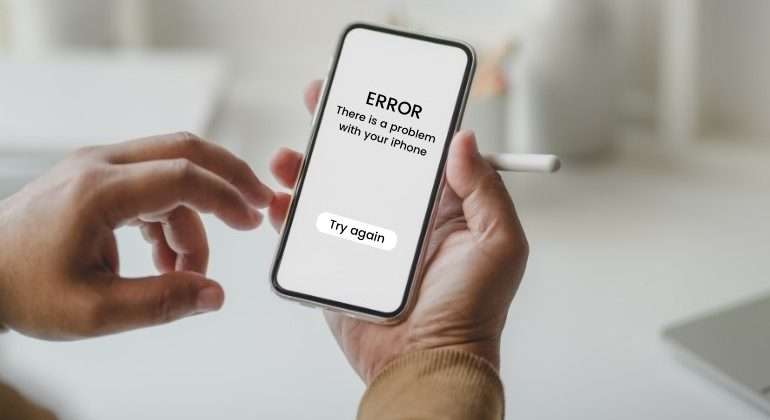The contemporary world is governed by the use and application of mobile devices. According to a recent survey, it is estimated that the total number of global smartphone users is expected to gross 7.49 billion. With the rising demand and prices for smartphones, general consumers are willing to invest in second-hand devices to save a considerable amount of money.
However, individuals considering the purchase of second-hand devices must acknowledge the fundamental question “Does eSIM work on blacklisted phones?” Purchasing blacklisted phones is a prevalent risk within the smartphone community. The following pointers help us to learn more about the properties of a blacklisted phone:
- Blacklisted phones are classified and recognized as stolen or lost devices as reported by the initial owner.
- When a phone is reported as blacklisted, its unique International Mobile Equipment Identity [IMEI] number is registered under the global blacklisted device database.
- Global mobile operators utilize this data to ensure that the blacklisted device is not reused on the concerned network.
However, these fundamental standards are not necessarily adopted by every carrier service provider, depending on their independent service policies. Therefore, if you are facing issues with a blacklisted mobile device and wish to reactivate it, ensure to review the sections highlighted below.
Also Read: Mobile Communication Simplified: What Does it Mean Call is Waiting?
Table of Contents
What is a Blacklisted Phone?
A blacklisted phone is a device that has been reported as lost, stolen, or linked to fraudulent activity. When a phone is blacklisted, its unique identifier, the IMEI (International Mobile Equipment Identity), is added to a global database of blacklisted devices.
Carriers and authorities use this database to block blacklisted phones from being used on their networks. However, it’s important to note that not all operators recognize this list of blacklisted devices. If your phone is lost or stolen, it’s advisable to contact your carrier and request that your IMEI be added to the blacklist.
Can I Use an eSIM on a Blacklisted Phone?
When a smartphone is reported as blacklisted, it conventionally loses the ability to effectively connect with any carrier network. Individuals are free to use the device to fulfill other relevant mobile activities such as playing games, scrolling through social media, and listening to music. Consequently, aspects such as initiating phone calls, sharing text messages, and SMS verification cannot be completed on a blacklisted smartphone.
However, the issue of network connectivity on blacklisted smartphones can be effectively mitigated with the use and integration of eSIM cards. Hence, the fundamental question “Does eSIM work on blacklisted phones?” gains relevance.
Both physical and eSIM cards are traditionally deemed “Unworkable” on blacklisted mobile devices. However, additional factors such as the carrier service policies, the reason for blacklisting, and assistance from external sources can help overcome this limitation. The following pointers provide a comprehensive overview:
A. Independent Carrier Service Policies
Due to existing security standards, most mobile operators do not allow eSIM service activation for blacklisted smartphones. However, some carrier networks acknowledge customer requests that allow users to work with a fully functional eSIM card. Ensure to seek direct assistance from your carrier customer support team to gain complete knowledge about the service policies of the concerned mobile operator.
B. The Primary Reasons for Blacklisting
A smartphone is generally added to the blacklist when stolen or lost. However, the entry into the blacklist may sometimes be incorrect due to existing technical errors. Moreover, individuals regaining possession of lost or stolen smartphones can put forth a plea to remove the device IMEI number from the current blacklist data. Users are recommended to connect with their carrier customer support team to learn more about this aspect.
C. External Methods
Individuals may also seek assistance from external service providers who possess the ability to jailbreak the device such that it regains the ability to support an eSIM card. Various online platforms claim to remove a smartphone from the blacklist data.
However, this method is considered to be unethical as it may directly violate the independent carrier’s terms of service. Ensure to connect with your mobile operator before making the final decision to jailbreak the device.
Interesting Read: Internet Access on the Go: How Much Data Do I Need When Travelling?
Can you tell if a Phone is Blacklisted?
Individuals who are planning to purchase a handed-down smartphone are recommended to track the blacklist data to avoid additional complications. Users can track the blacklist status by using the IMEI number assigned to the concerned mobile device.
All you need to do is intimate the IMEI number to your carrier service provider to validate the blacklist status of the mobile device. Fulfilling this minor verification step ensures that the final user will be able to effectively use internet amenities and initiate phone calls with complete convenience.
Conclusion
There you have it! These were some of the foremost aspects concerning the fundamental question “Does eSIM work on blacklisted phones?” Be on the lookout for blacklisted smartphones and seek direct assistance with your preferred mobile operator in case of any additional queries and concerns.
FAQs
Can you activate a blacklisted phone?
Yes! A blacklisted phone can be reactivated depending on the service policies of the carrier operator in charge. Users are recommended to connect with their carrier operator customer support team to gain a complete understanding of the blacklisting service policies.
Additionally, users may also seek assistance from various external service providers who can replace the IMEI chip from a blacklisted mobile device. Users are also recommended to contact the smartphone phone-selling company to avail immediate solutions.
How long does a phone stay blacklisted?
Conventionally, a phone remains to be permanently blacklisted unless the rightful owner can verify and authenticate their ownership.

